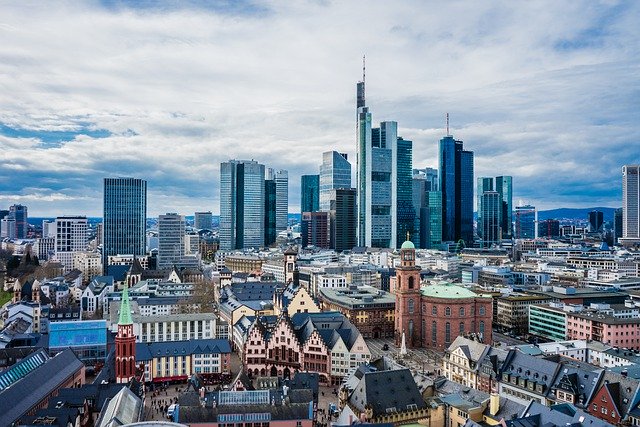
Urban habitats are known for being uniquely and quasi-exclusively human with distinct human challenges. They provide a sense to our existence and modern practices while we bring life to them and define the purpose of their being. This intimate and highly sacred relationship between homo sapiens and the built environment is profoundly perpetuated on a constant basis by wars, economic changes, technological developments, and infectious outbreaks such as the infamous mid-1300s bubonic plague, the 1918 Spanish flu, and the current coronavirus pandemic. Such scourges result not only in the death of millions of people but also in the disruption of our sense of place and the redefinition of the way the urban fabric is planned, designed, built, and used. COVID-19 is definitely reshaping our cities once again and urbanists, architects and designers are ought to provide adequate solutions in order to mitigate the downsides of what the world is currently going through.
Throughout the nineteenth century, recurring plague and cholera pandemics left humongous marks not only in terms of death tolls but in spurring and bettering design elements such as wide avenues, boulevards, and green urban parks that transformed major metropoles around the globe. London, for instance, reimagined its sewage system by transporting the city’s waste, which caused multiple outbreaks, far away from its core that the river Thames’ tides took it out to sea. Paris, on the other side of La Manche, opened wider tree-lined streets and parks and made working-class quarters, which lacked air and light, more healthy. The new plans of the two cities were partially laid out in order to bring a more hygienic atmosphere into the dense urban grid and were later cited as examples for the new plans for colonial cities in busy areas such as Rabat and Casablanca, where urbanists separated the dense medinas, regarded as dirty and chaotic, from the new European cities by sanitary cordons along with big central avenues and well-sized green areas. Besides, in many other cities and especially in the United States, a preference for a suburban lifestyle far from the unsafe and unhygienic crowded city centers became prevalent as the latter was left for low-income racial minorities who were associated with crime and diseases.
The current outbreak, which started in Wuhan and spread across the globe within a few weeks, is one of the best time-lined pandemics of its kind by dint of instant media coverage and the transparency of medical and health institutions which made it easier for us to urgently revise our behaviors and think of adaptable alternatives for our private and public living areas. A couple of urbanists suggested that in a post-COVID-19 world cities should have more pedestrian streets and wider walkable and cyclable lanes both in suburbias and in dense urban centers in an attempt to make outdoor spaces more human-friendly and large enough to provide a livable and safe canvas for daily activities. Although it would be a nightmare for car lobbyists, it’s a huge step for human-oriented cities. In addition to that, an efficient and sustainable transportation system and infrastructure which connects city business centers to peripheries and adjacent quarters and towns may lead to the sparsification of human populations in dense areas as they will be more encouraged to inhabit the outskirts and thus having an equal and less dense distribution of people.
On a smaller architectural scale, there’s again a lot to be done. Experts predict an increasing demand for houses instead of apartments as it is necessary to reduce contact with everything that is used in multi-story buildings: elevator, elevator buttons, door handles, surfaces, and, above all, neighbors in times of pandemic. Moreover, we might be saying goodbye to one of the main trends of recent years: open-plan spaces, with the entrance, living room, dining space, and kitchen united. In the aftermath of the pandemic, the entrance area will be separated so that we can leave our shoes, clothing, and belongings on the street,
rather than carry dirt into the living areas. Office spaces will also have fewer open-spaces and more clustered individual offices that will absolutely decrease in number as many jobs will be performed virtually from home. On a technical level, HVAC (heating, ventilation, and air-conditioning) systems must be isolated from plumbing ones because if not designed properly they may lead into a mass spread of infection as the bacterial matter will be blown back into the different units of a building like what happened in Hong Kong. Designers, on the other hand, are also helping create next world devices and tools such as open-source face shields, wearable shields made from carbon fiber and PVC film, portable sanitation kits, and outdoor urinals such as the Uritrottoir developed by studio Faltazi.
There are many more pleasant discoveries ahead. The new world will be about things that matter. And global occasions like this pandemic and the very recent protests by the Black Lives Matter movement against racism and police brutality encourage us to think of a better, safer and more inclusive world where everyone has the right to live a healthy and long life, far away from fear, hate, and violence. It’s time for us all to be united regardless of our race, religion, and gender and walk through this rough patch hand in hand in order to build a more prosperous future. To conclude, it’s important to stay healthy for the moment, wash our hands, stay at home, and let’s create a new worthy life that the planet will no longer want to lose.






